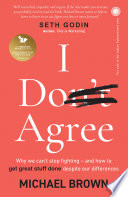

The book emphasizes the importance of disagreement in fostering innovation and growth. It argues that when individuals or teams engage in constructive conflict, they are more likely to uncover new ideas and perspectives. Disagreement challenges the status quo and prompts critical thinking, which can lead to better decision-making. The author provides examples from various industries where healthy debate has led to breakthroughs, highlighting that avoiding disagreement can stifle creativity and hinder progress.
Continue readingEmotional intelligence is crucial when navigating disagreements. The book discusses how understanding one’s emotions and those of others can facilitate more productive conversations. It suggests techniques for managing emotions during conflicts, such as active listening and empathy. By fostering emotional intelligence, individuals can respond to disagreements in a way that promotes collaboration rather than division, ultimately leading to more effective resolutions and stronger relationships.
Continue readingThe author introduces several frameworks that can be employed to approach disagreements constructively. These frameworks include techniques like the 'Five Whys' to dig deeper into the reasons behind differing opinions, and the 'Devil’s Advocate' approach to challenge ideas without personal bias. By using structured methods to navigate disagreements, teams can ensure that discussions remain focused and productive, reducing the likelihood of conflict turning personal or unproductive.
Continue readingThe book advocates for organizations to cultivate a culture where open dialogue is encouraged. This involves setting ground rules for discussions and making it clear that differing opinions are valued. The author argues that when team members feel safe to express their views, even if they disagree, it leads to a more engaged workforce and a more dynamic exchange of ideas. The chapter includes practical steps leaders can take to foster this culture, such as regular feedback sessions and inclusive decision-making processes.
Continue readingDisagreement is framed as a catalyst for innovation. The book draws on research that shows teams that engage in constructive conflict are more likely to generate creative solutions. The author provides case studies of companies that have thrived by embracing disagreement, illustrating how diverse viewpoints can lead to novel products and services. This idea encourages readers to view conflict not as a barrier but as an opportunity for innovation and improvement.
Continue readingThe book discusses how engaging in disagreements can contribute to personal growth. By confronting differing opinions, individuals can refine their own beliefs and expand their understanding of complex issues. The author encourages readers to view disagreements as learning experiences that can enhance critical thinking and adaptability. This perspective helps to shift the mindset from seeing conflict as a negative experience to viewing it as a valuable opportunity for self-improvement.
Continue readingFinally, the book outlines various strategies for resolving conflicts that arise from disagreement. This includes techniques like mediation and collaborative problem-solving, which aim to find common ground. The author emphasizes the importance of focusing on shared goals and interests rather than personal positions. By adopting these strategies, individuals and teams can navigate conflicts more effectively, leading to resolutions that satisfy all parties involved.
Continue reading